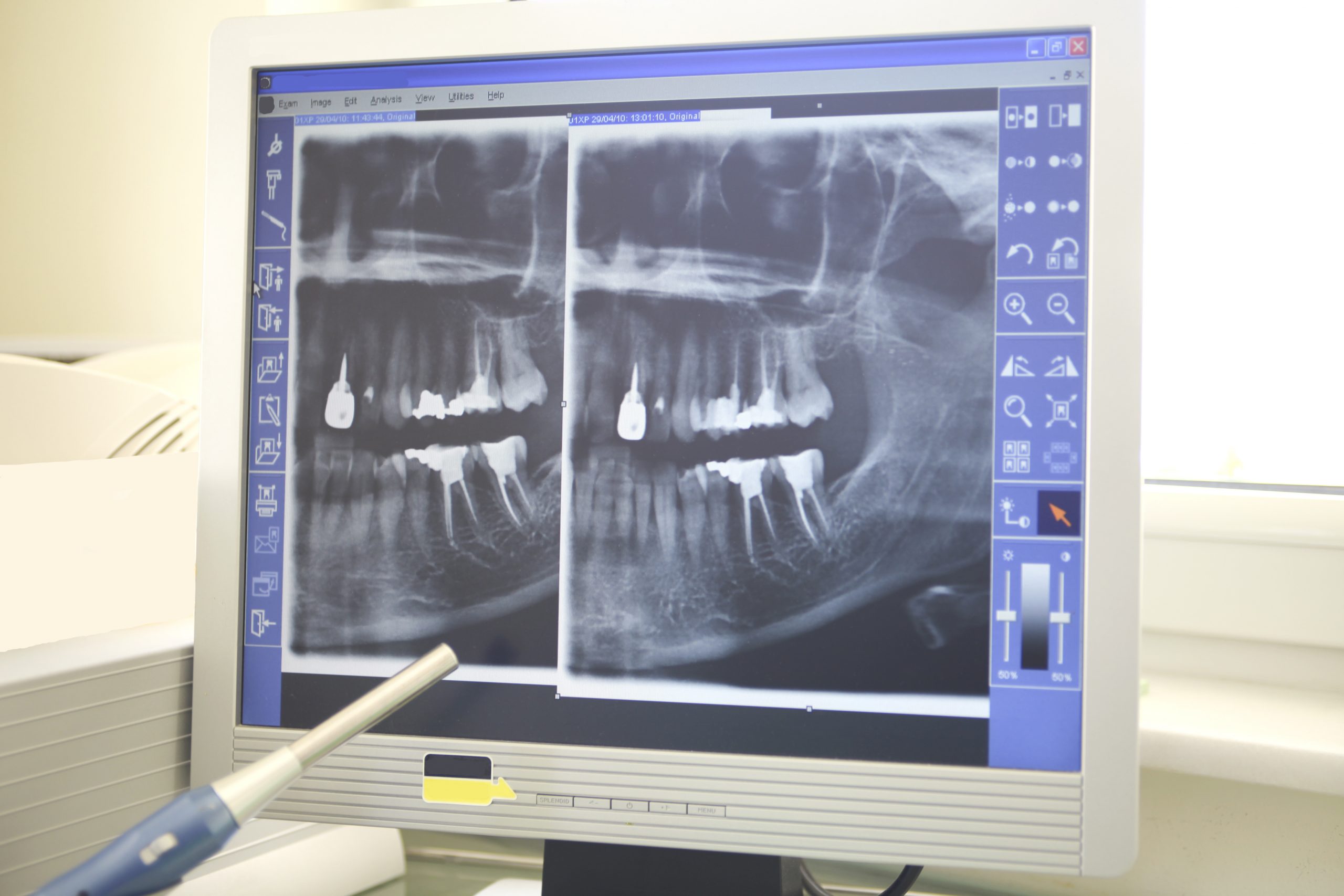X-rays, also known as radiographs, are an essential part of any dental care treatment plan. They are diagnostic, but they can also be preventative, by helping a dentist diagnose potential oral care issues in a patient’s mouth before they become a major problem.
Intraoral X-rays are the most common type of radiograph taken in dentistry. Intraoral X-rays are taken inside the mouth. They give a high level of detail of the tooth, bone and supporting tissues of the mouth.
These X-rays allow dentists to:
- Find cavities
- Look at the tooth roots
- Check the health of the bony area around the tooth
- Determine if periodontal disease is an oral care issue
- See the status of developing teeth
Are dental x-rays safe?
 Dental X-ray exams are safe; however, they do require very low levels of radiation exposure, which makes the risk of potentially harmful effects very small. A leaded apron minimizes exposure to the abdomen and may be used when it will not interfere with the acquirement of the x-ray. Also, a leaded thyroid collar can protect the thyroid from radiation, and should also be used whenever possible. The use of a leaded thyroid collar is recommended for women of childbearing age, pregnant women and children.
Dental X-ray exams are safe; however, they do require very low levels of radiation exposure, which makes the risk of potentially harmful effects very small. A leaded apron minimizes exposure to the abdomen and may be used when it will not interfere with the acquirement of the x-ray. Also, a leaded thyroid collar can protect the thyroid from radiation, and should also be used whenever possible. The use of a leaded thyroid collar is recommended for women of childbearing age, pregnant women and children.
You may have heard getting an x-ray during pregnancy can harm your baby. This can be true, but in some cases not getting an x-ray can harm you more than it can harm your baby. Remember, a healthy mom means a healthy baby. Not all x-rays are the same, but most pose little exposure to the uterus and developing fetus. With dental x-rays there is hardly any exposure to any part of the body except the teeth. X-ray examinations on the arms, legs, or chest do not expose your reproductive organs to the direct beam. **Always let your health care provider know you are pregnant.
Dental x-rays are safe. Any kind of x-ray requires radiation, but with dental x-rays, the amount of radiation is very small. And today’s modern digital x-rays require much less radiation for exposure than traditional film x-rays do. Four bitewing x-rays, which is what many people get in a routine exam, give about .005 millisieverts of radiation, that’s about the same amount of radiation you get in a normal day from the sun and other sources.
Most of our daily activities expose us to some level of radiation. Your microwave and other home appliances, sunlight, and minerals in dirt also give off radiation. That is why the dental assistants take precautions and put those heavy aprons on. There’s lead inside, which blocks the radiation from your body, and the little collar part of it helps to protect your thyroid, all of which minimizes your exposure.


